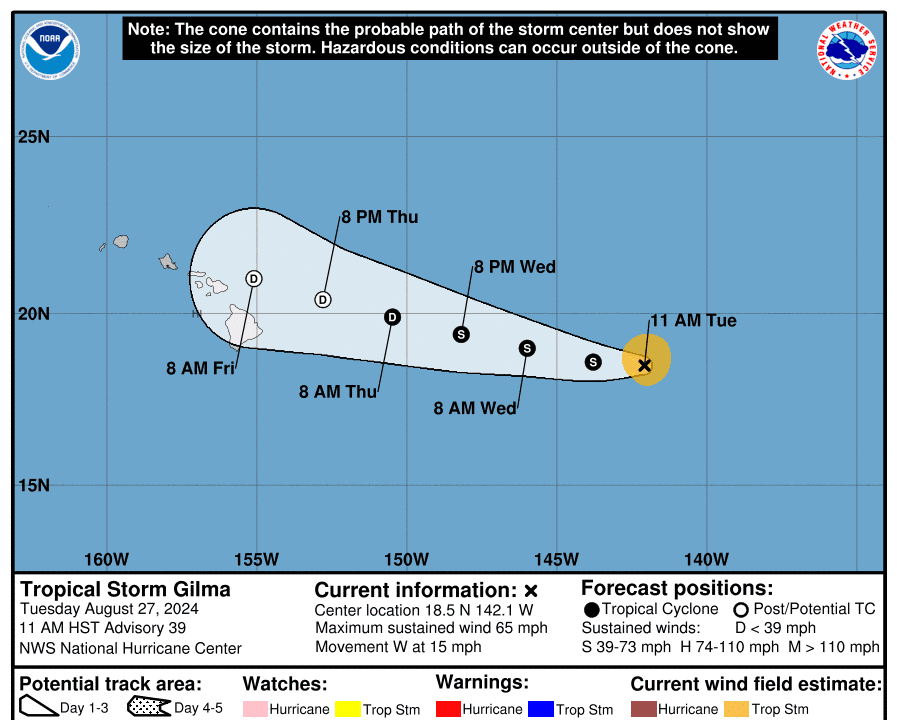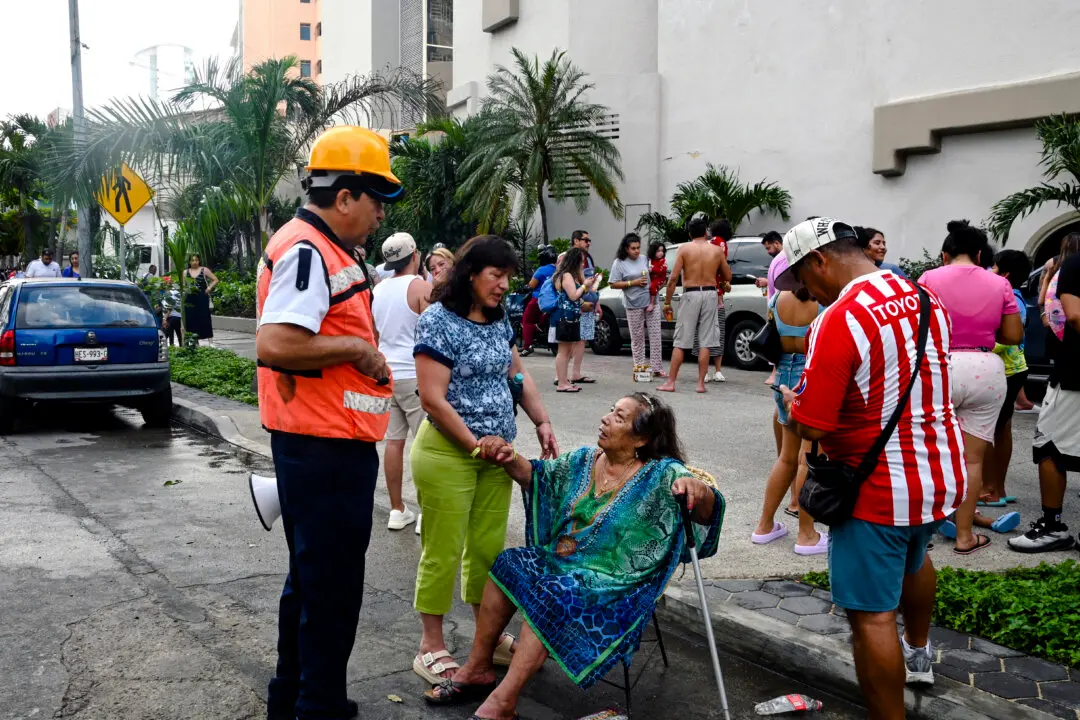Heading toward Hawaii, Gilma dropped from a strong Category 2 hurricane to a tropical storm in the last 24 hours, according to the National Hurricane Center (NHC).
An advisory released at 11 a.m. local time (5 p.m. ET) reported the storm’s maximum sustained winds decreased to 65 mph, down from the 110 mph registered at the 11 a.m. update on Aug. 26. Sustained winds of 75 mph were recorded at the 5 a.m. advisory on Aug. 27, as the NHC reported Gilma was “rapidly becoming less organized” because of intense wind shear and cooler waters.





